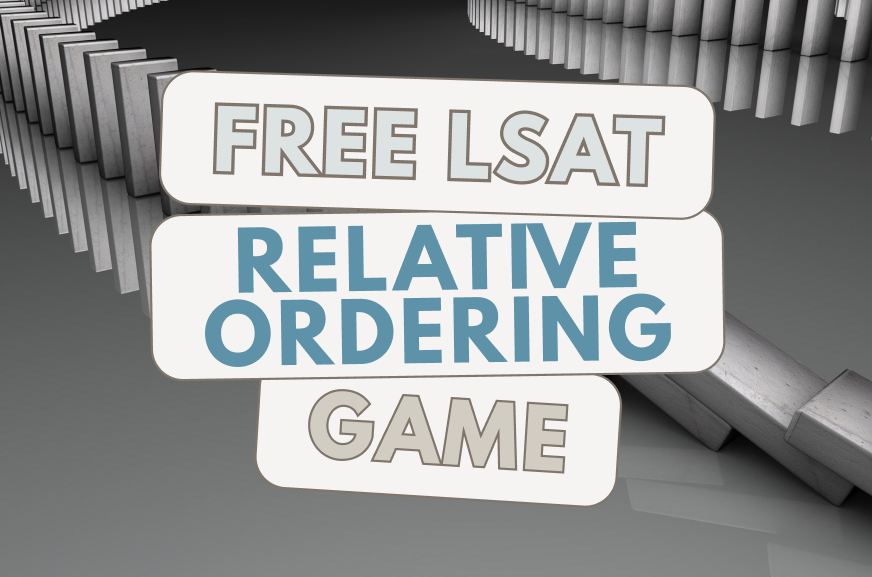UPDATE: You can get this game, along with several others I’ve written, in a free book.
This Logic Game I’ve written is what some would categorize as Pure Sequencing, Loose Sequencing, or Relative Ordering.
Whatever you call it, this type of game requires you to put variables in order, just like Basic Linear games do.
So what’s the difference between Pure Sequencing and Basic Linear?
In Pure Sequencing, most of the rules involve the relationship between one variable and another. They’ll say things like “A is before B” or “C is after D.”
In Basic Linear games, you’ll have a few rules that refer to specific and defined “slots” or places within the ordering.
Because the rules for Pure Sequencing games differ from those in Basic Linear games, the most efficient diagrams for these types of games differ a bit from those you’d use for Basic Linear games.
Instead of using slots, I recommend using short lines or “branches” to represent the relationships between variables. In other words, draw lines between variables to indicate their relationships.
Represent something like “A is before B” as “A-B.”
Please email me your thoughts and questions!
***
Here’s the Logic Game:
At the annual meeting of the Magicians’ Alliance, 8 magicians-L, M, N, O, P, Q, R, and S- perform their latest illusions, one magician at a time. The order in which the magicians perform their illusions is consistent with the following conditions:
L and Q each perform at some time after P.
S performs at some time before O and L.
M performs at some time before S.
P performs at some time after N.
S and N each perform at some time after R.
- Which one of the following could be the order in which the magicians perform their illusions?
(A) M, N, R, S, P, Q, L, O
(B) S, M, R, N, P, L, Q, O
(C) R, N, M, P, O, S, Q, L
(D) R, M, S, L, N, P, Q, O
(E) M, R, S, N, O, P, Q, L
- Which one of the following magicians CANNOT perform third?
(A) M
(B) N
(C) O
(D) P
(E) S
- If O is the fourth magician to perform, then which one of the following must be true?
(A) M is the second magician to perform.
(B) L is the fifth magician to perform.
(C) P is the sixth magician to perform.
(D) Q is the seventh magician to perform.
(E) L is the eighth magician to perform.
- If P performs before S, then each of the following must be false EXCEPT:
(A) R is the third magician to perform.
(B) S is the fourth magician to perform.
(C) P is the fifth magician to perform.
(D) Q is the sixth magician to perform.
(E) S is the seventh magician to perform.
- If R performs after M and O performs before P, then which one of the following could be true?
(A) M is the second magician to perform.
(B) O is the third magician to perform.
(C) N is the fourth magician to perform.
(D) S is the fifth magician to perform.
(E) L is the sixth magician to perform.
***
The text below contains the answers to the above Logic Game.
- E
- C
- C
- D
- C
***
See my explanation and diagrams of this game in Logic Games Diagram Explanation | Relative Ordering / Pure Sequencing.
Also see my explanation of this game’s set-up in Logic Games Relative Ordering / Pure Sequencing Step-by-Step Diagram.
***
For some LSAC-written Logic Games like this one, check out PrepTest 33, Game 1 and PrepTest 38, Game 1 in The Next 10 Actual, Official LSAT PrepTests.

